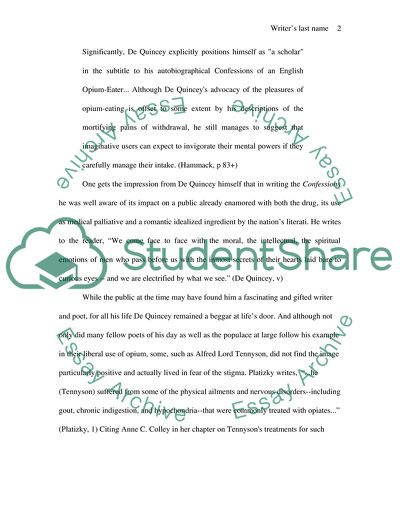Cite this document
(The Influence of Thomas De Quincey on Nineteenth-Century Medicine Book Report/Review, n.d.)
The Influence of Thomas De Quincey on Nineteenth-Century Medicine Book Report/Review. Retrieved from https://studentshare.org/health-sciences-medicine/1727249-how-did-thomas-de-quincey-influence-the-nineteenth-century-medical-profession
The Influence of Thomas De Quincey on Nineteenth-Century Medicine Book Report/Review. Retrieved from https://studentshare.org/health-sciences-medicine/1727249-how-did-thomas-de-quincey-influence-the-nineteenth-century-medical-profession
(The Influence of Thomas De Quincey on Nineteenth-Century Medicine Book Report/Review)
The Influence of Thomas De Quincey on Nineteenth-Century Medicine Book Report/Review. https://studentshare.org/health-sciences-medicine/1727249-how-did-thomas-de-quincey-influence-the-nineteenth-century-medical-profession.
The Influence of Thomas De Quincey on Nineteenth-Century Medicine Book Report/Review. https://studentshare.org/health-sciences-medicine/1727249-how-did-thomas-de-quincey-influence-the-nineteenth-century-medical-profession.
“The Influence of Thomas De Quincey on Nineteenth-Century Medicine Book Report/Review”, n.d. https://studentshare.org/health-sciences-medicine/1727249-how-did-thomas-de-quincey-influence-the-nineteenth-century-medical-profession.


